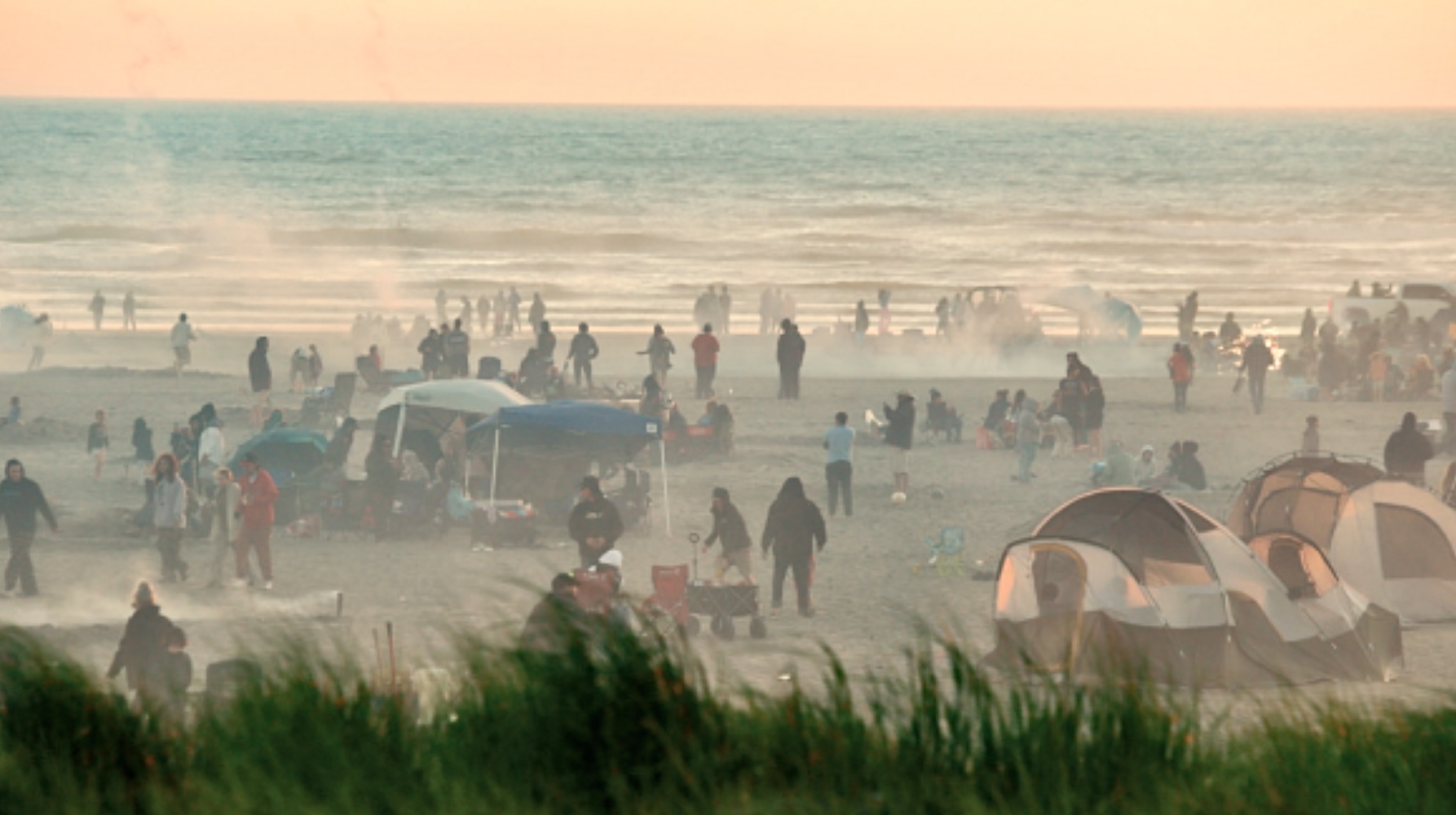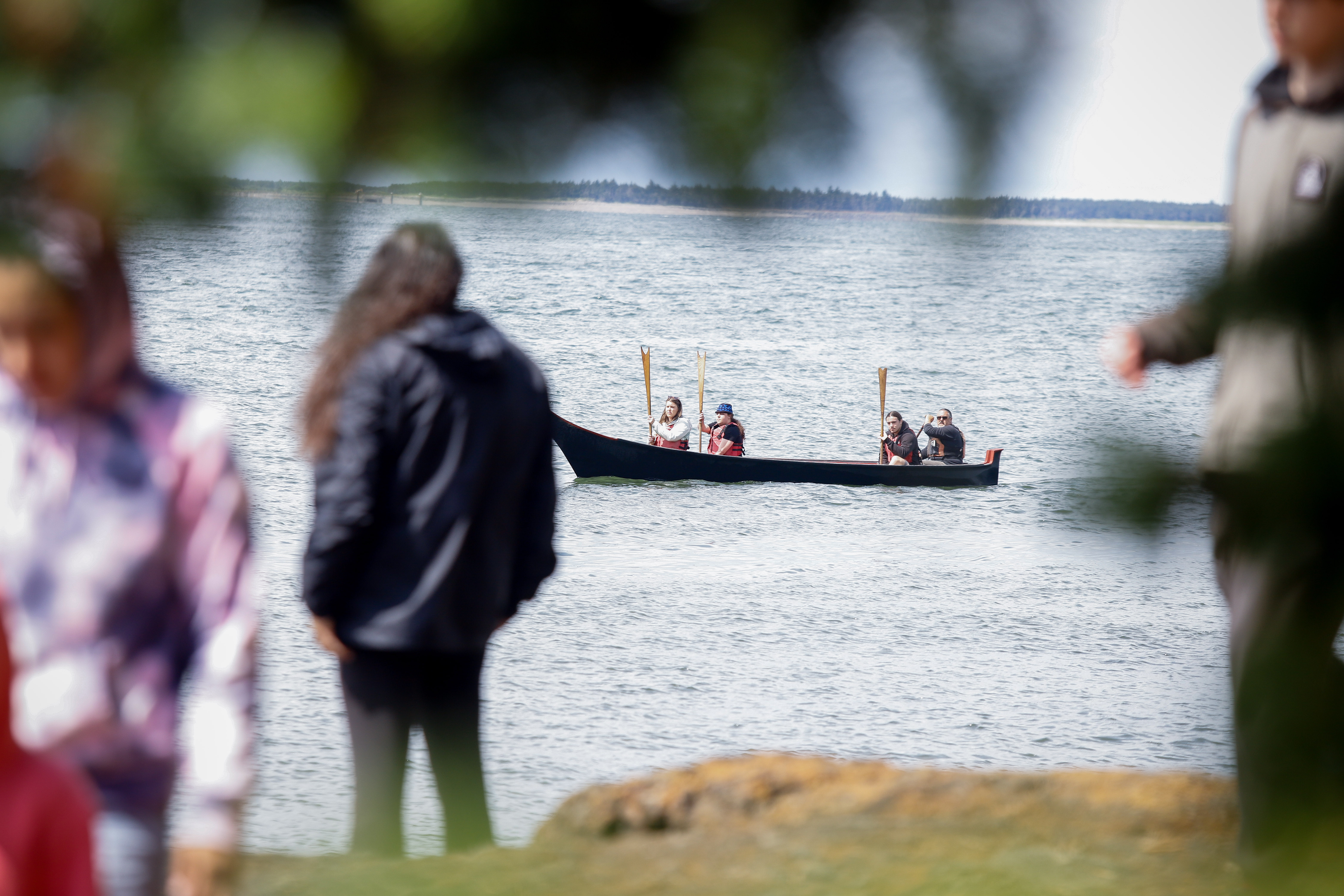‘Any port in a storm’?
Published 5:00 pm Tuesday, August 13, 2002
An editorial writer once observed that Peninsulans sometimes fight “like six weasels in a three-pound coffee can.” That was never more apparent than in the dustup about two airports.
It started out all innocence in May 1946. In the boom which followed the war there was government money available to build airfields in the hinterland. At Klipsan Beach, an entrepreneur named Sid Monestes was putting in a half-mile-long landing strip seeded with 1,400 pounds of rye grass. The field, to be known as the Ocean Park Skyport, was to be ready for business that summer; Monestes planned to handle commercial flights from Seattle and Portland.
In January 1947 the Observer reported another airport in the works. “As a reward for three years of hard planning, [writing] letters to congressmen and [the] Civil Aeronautics Administration by Port of Peninsula commissioners … John Wiegardt, Gilbert Tinker, Kenneth Heckard … and Auditor Geo. J. Buri, the Civil Aeronautics [Board] last Friday named Long Beach as among 800 airports to be built … with aid of the government funds in the first year of the federal airport program.”
It was estimated that this Long Beach airport would have several hangars and an administration building and would cost about $45,000, half to be paid by the CAA, half by the Port of Peninsula. “C.A. officials have disclosed the local proposed airport strip as being ideally located.” It was to be on Second street north, two blocks east of Pacific avenue.
(It should be noted that the City of Long Beach fell within the Port of Peninsula jurisdiction while the port docks and waterfront at Nahcotta belonged to the Port of Ilwaco. Strange, but true.)
By September 1947 the Ocean Park Skyport was offering returned GIs “land and seaplane training and flight instruction [taught by a veteran pilot of B-17s in Europe] … seven days a week from 8 a.m. to 6 p.m.; ground courses will be offered at Ocean Park grade school on Tuesdays and Thursdays from 8 p.m. to 10 p.m.”
At the same time, Port of Peninsula commissioners Tinker and Heckard, together with auditor Buri, had adopted a comprehensive plan for the new airport 8 miles to the south.
“There were only a very few in attendance at the meeting,” reported the Observer, “and only one man, Earl Bendiksen, oyster grower of Nahcotta, voiced opposition to the plan. It is thought because Mr. Bendiksen has use for better docking facilities at his oyster cannery in Nahcotta and perhaps would sooner see port money spent on this dock. However … Port of Peninsula funds cannot be used on this dock as it is within the jurisdiction of the Ilwaco port district.”
– Sept. 12, 1947
Editor O’Neil clearly favored the building of the Long Beach air facility: “Untold good is predicted to come from completion of this port district airport for two special reasons, fliers being able to set down right in town, and the other reason given by the Civil Aeronautics is correct location for prevailing winds.”
The following May – by now it was 1948, and Ocean Park’s air port had been in operation for some months – the newspaper reported a Port of Peninsula commissioners’ meeting wherein a group of North End residents objected to an airport in Long Beach.
“There were about 25 Ocean Park people … [and] the delegation’s chief protest was based on lack of need for airport facilities …
“The Civil Aeronautics Administration,” explained the Observer, “has carefully inspected various likely airport spots in the Peninsula area and chose the one here as being exceptionally suited for a site as part of the National Airport Plan.” Commissioner Wiegardt read from the CAA’s report:
“Prior to deciding upon the particular site for development with federal funds, the entire vicinity is visited by an engineer from this office … [and] the entire peninsula from Ilwaco on [the] south to Oysterville on the north was taken into consideration. This also included the existing sub-standard landing strips at Ilwaco and at Klipsan Beach.
“Also in this case, not only the existing population was considered but also the tourist population. After due consideration it was decided that the Long Beach area was nearest the center of the population of the peninsula in both instances.
“Therefore, it was decided that an airport near Long Beach would better service everyone concerned than an air port at any other point on the peninsula …”
Another development roiled the waters: “At the opening of the meeting restraining orders were served [by Ocean Park representatives] on all the commissioners in regard to accepting the financing bid [which would allow the Long Beach airport project to proceed].” This proved to be a bluff and the meeting continued, with the Port of Peninsula commissioners voting to call for bids.
At this point, the Longview Daily News expressed its editorial concern about the tone of the proceedings and counseled unity among the Peninsula’s small communities.
The next development was reported beneath the headline, “Ocean Parkers File Suit Against Airport.”
“A suit involving the construction of a proposed airport near Long Beach has been filed by E. V. Farnick and C. L. Spencer, both of Ocean Park, vs. Port of the Peninsula: Gilbert Tinker, John Wiegardt, Kenneth Heckard, as commissioners of the port, and Ross Neilson, as Pacific county treasurer, and treasurer of the port.
“The complaint charges that construction of the airport is against the wishes of the majority of the voters of the district, and that tax levies have been unnecessarily made to raise funds for the purpose of building up a surplus to be used by the commissioners as they saw fit, without a vote of the people …
“The plaintiffs ask that an injunction be issued, restraining the commissioners from expending any money on the airport or in any way except for the return to taxpayers either directly or by reduced levy in future taxes. They also ask an injunction prohibiting the commissioners from accepting any matching funds of the federal or state government for airport purposes.”
Commissioner Wiegardt concluded about the ruckus, “My apologies to my fellow commissioners and the people of the Long Beach district for the lack of inter-community spirit shown by the people of this district.”
– July 2, 1948 In August, the newspaper announced that Gene Haddix had “closed out his planes at Ocean Park Skyport, south of Klipsan Beach, and gone his way.”
The demise of the Long Beach airport was reported in Nov. 26, 1948. “Editorial. Airport Project Stiff and Cold. Auditor Geo. J. Buri this week told this newspaper he had notified the Civil Aeronautics Administration to go ahead and dispose of the federal government grant of $16,000 which had been set aside for the Port of Peninsula airport. So writes finis to a worthwhile project for this Peninsula area, all because of a lack of neighborly cooperation, judging from letters received from upper peninsula persons, such as: ‘If Long Beach wants an airport let them build it.’ So if a neighbor lacks the spirit of cooperation, far be it from us to try and force the issue, by vote or any other means.”
Had the ability to say “uncle” gracefully been standard operating equipment for either the Chinook Observer or the Ocean Park chamber of commerce, this conflict might have resolved itself amicably. As it was, the wish to have the last huffy word opened the way for future hostilities.
The words of a friend …
(This editorial was reprinted from the Longview Daily News in May 1948 by the Observer. It was written during the heated debate about the airports at Klipsan Beach and Long Beach.)
“Rivalries among small towns or even big towns in a given locality amount to nothing more than foolishness when they prevent the kind of development that is beneficial to all.
“This profound observation was prompted by a visit to the Long Beach area where a few sincere and energetic persons are making a determined effort to get the scattered group of peninsula communities to work together instead of against one another on common problems …
“Up until now … the rivalry existing among the towns of Ocean Park, Long Beach, Ilwaco, and Chinook has resulted in each trying to outdo the other rather than all working together to make the Long Beach Peninsula area outdo the other summer resorts which are bidding for the lucrative tourist trade.
“We don’t mean to scold the peninsula towns. Intertown rivalries are as natural as anything in America. The town that doesn’t have pride enough or ambition enough to want to be supreme and make of itself a better town than those around it lacks the making of a good, live, progressive community. Longview and Kelso, Centralia and Chehalis, Aberdeen and Hoquiam are three examples here in Southwest Washington of cities that are adjacent and still maintain their independence and a spirit of rivalry which one considers healthy. But when it comes to common problems or projects which will benefit both, these cities usually are able to find a way of working together towards a common end.
“On the opposite shore of the Columbia’s mouth is the beach area composed of Gearhart and Seaside, not far from the city of Astoria. We never fail to visit the Oregon beaches and note their advanced stage of development without feeling somewhat jealous. We believe the crowds that swarm that area would like the Long Beach Peninsula area much better if our side of the river possessed the recreational facilities and the accommodations that the Oregonians have.
“Seaside got a head start because it had the railway at a time when the only way to get into the Long Beach area was by steamboat, but Seaside doesn’t possess the natural advantages that we enjoy … A longer beach, better clam digging, better fishing facilities and more scenic areas such as North Head and the Cape Disappointment peninsula, make many persons prefer the north side of the river to the south side.
“But the Long Beach peninsula lacks golf courses, for one thing … There are no large hotels on this side and there are several on the other. There is no centralized amusement area on this side as there is in Seaside.
“These disadvantages could be overcome … if all the people of the Peninsula area would unite in a development program unhampered by any town rivalries. In an area which has so much in common, one place is not going to grow to the detriment of another. What benefits one will benefit all. We believe it is advice well given to say that the area from Oysterville to Chinook is essentially all one community, the Long Beach peninsula community, and that through unity they can accomplish what they never can hope to separately.
“Southwest Washington … is very proud of the Long Beach region. It likes to send visitors down there, and it wants those visitors to be favorably impressed and well taken care of while they are there. Southwest Washington wants Long Beach to be the state’s finest playground, and it can be if the effort is directed in the right way.”
– Longview Daily News






